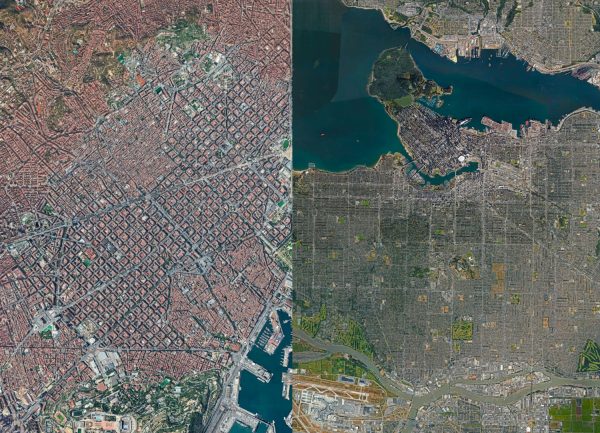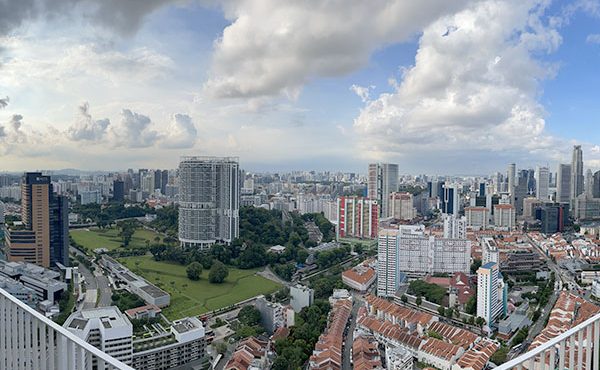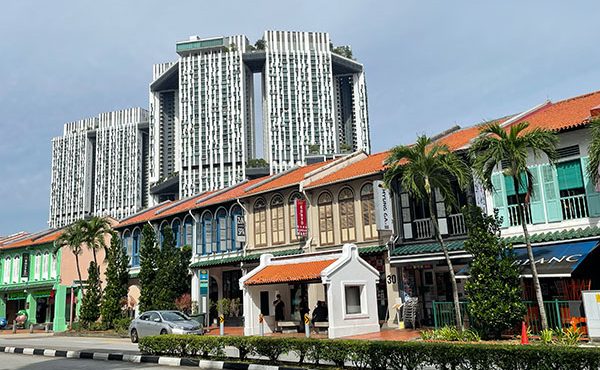
Who is the city for?
Last week, a good friend of mine recently told me he and his family were leaving Vancouver. His words struck a chord: “Vancouver has broken us.” Both he and his wife are working professionals. They couldn’t face another winter crammed into a shoebox apartment with their young child. Years of searching for a space that could accommodate a small family without breaking the bank had finally worn them down. One disappointment after another led them to this decision, until leaving became the only choice they had left.
This story would hardly be worth mentioning if it weren’t so painfully common. Each year, more friends and family members pack up and leave Vancouver behind. These aren’t just abstract statistics—they’re skilled professionals, hardworking families, and everyday people who contribute to the intricate fabric of our urban life.
And these people are not even the most vulnerable people in our city.
With each departure, a piece of Vancouver’s spirit disappears, leaving behind not vibrant communities but vacant investment properties and darkened condo windows. The city is losing its people, and with them, its soul.
I know many readers have had similar experiences and can feel it getting worse with every passing year.
Who is the city for?
The Barcelona Chronicles were born out of this sense of loss and frustration.
Too few of us think about cities as designed spaces, shaped not only by physical structures but by the values, policies, and decisions that inform their growth. What we experience daily—the places where we live, work, and gather—are a reflection of choices made far above our heads. And the consequences of these choices are anything but abstract; they touch every corner of our lives.
Even those of us working in city-building disciplines often struggle to see the bigger picture. Our fields are guided by entrenched biases, drilled into us through education and professional practice, rarely questioned and barely examined. We carry these assumptions with us like heavy backpacks, often too self-assured to realize that we are part of a much larger historical process.
The result is a kind of arrogance—an inability to see beyond the immediate goals of growth and development to the longer-term impacts on people’s lives.
For most of human history, cities grew organically, shaped by the needs and experiences of their residents, without the interventions of urban planners, mayors, or city councils. The structured, top-down approach we now call “urban planning” is a relatively new experiment, and an honest reflection would acknowledge that the most profound mistakes of the past century have coincided with its rise.
In 1965, Christopher Alexander wrote “The City is not a Tree” which argues that cities are complex, interconnected systems, not hierarchical tree structures. He argued rightly that a tree-like approach to urban planning oversimplifies the intricate, overlapping relationships within a city, leading to less vibrant and functional urban environments.
The environmental and social crises we now face are tied to decisions made in boardrooms and council chambers, rooted in a belief that cities can be controlled and shaped like machines…or worse yet, treated like businesses.
But cities are not machines—they are living, breathing ecosystems, with people as their heartbeats.
Cities are also not like businesses—they’re not about maximizing efficiency, profit margins, and heavy-handed hierarchical control that benefits the few at the expense of others.
This misses the fundamental nature of urban life.
Cities thrive on collaboration, cultural exchange, and organic growth. All metaphors oversimplify the complexity cities, leading to rigidity that ultimately fails to meet the diverse needs of its citizens.
We are living inside an ongoing experiment of our own making. The answers we thought certain have crumbled, and the stakes are higher than ever. Every misstep reverberates through people’s lives and echoes into the future. We must be willing to question everything.
At a time when all that is solid melts into air, how do we find the right path forward?
Who is the city for?
I have had the privilege of visiting Barcelona many times over the past two decades, often as a teacher. There’s a kind of magic in the way the city evolved; no matter how short the time between visits, Barcelona always seemed to improve. This transformation sparked endless questions: Why? What’s different here? How does this city keep getting better?
My questions grew more urgent as I compared Barcelona’s trajectory to my own city, Vancouver, which to my eyes, was heading in the opposite direction.
Barcelona is not perfect—I’ve spoken to enough locals to know that. But, few would argue against the fact that the city’s transformation over the past decade has been largely positive, driven by an approach that places people at the forefront of planning. By focusing on livability, sustainability, and community—and seeing their interrelationship—Barcelona has embraced a model that seeks to enhance the quality of life rather than merely maximize profit.
Initiatives like the Superilla—where communities reclaim streets from cars—are not just about traffic; they’re about creating spaces where life happens, where the city breathes and its people thrive. Their affordability policies and systems are born from the same spirit.
In Vancouver, however, the story is different. The city that once led the way with community-driven planning and innovative policies has increasingly surrendered to the market. The shift toward a profit-driven approach is evident in the soaring real estate prices, growing economic divides, and shrinking spaces for ordinary people. The places where community once flourished are giving way to developments for the wealthy, their lights flickering on only when investors come to town.
The contrast is striking: while Barcelona has moved toward prioritizing the public good, Vancouver has edged further away from it. The results speak for themselves—rising unaffordability, deepening inequality, and the erosion of spaces where citizens can come together. These are not just symptoms of a housing crisis; they are indicators of a deeper, systemic issue in how we conceive of the city and city life itself.
When I began writing the Barcelona Chronicles, I compared key metrics between Barcelona and Vancouver, examining similarities and differences. But the most important point went beyond statistics and data: it was about a shift in values. These two cities, once on similar paths, now seem to have traded places in what they prioritize. In Barcelona, the focus has shifted toward people, while in Vancouver, the scales have tipped toward profit.
Who is the city for?
That is the question we must confront. Are we building cities for the people who live in them, or are we building them for those who see them as investments? The choices we make today will define the kind of place we leave behind for future generations.
We need cities that prioritize human connection, sustainability, and a sense of belonging—not cities that cater to the highest bidder.
Cities that strengthen community trust and build capacity in meaningful ways—not cities that blindly follow the “market” and divide.
Cities that offer affordable, accessible housing for all—not cities that force families out in favour of empty towers.
We need cities that invest in green infrastructure and clean energy—not cities that sacrifice the environment for short-term economic gain.
Cities that embrace diversity and inclusion, ensuring everyone feels seen and valued—not cities that prioritize exclusivity and status.
We need cities that prioritize well-being, with streets designed for people to walk, bike, and play—not cities dominated by cars and traffic congestion.
Cities that listen to the voices of their residents, shaping policies from the ground up—not cities that are dictated by developers, investors and top-down processes.
We need cities that cherish their history and local culture, allowing neighbourhoods to retain their character—not cities that erase their past in the name of progress.
More than ever we need a people-first approach—not a market-biased one.
The heart of a city isn’t found in its skyscrapers or its wealth; it’s found in the lives of the people who walk its streets every day.
It’s time to remember who the city is truly for.
***
Other pieces in the Barcelona Chronicles:
- Part 1 – Introduction
- Part 2 – Cerdà and Colau: Two Key Figures
- Part 3 – The Barcelona Housing Policy 2015-2023 Overview
- Part 4 – Defining Affordable & Social Housing
- Part 5 – Supplying Affordable Housing
- Part 6 – The 30% Measure and Others
- Part 7 – Vancouver v. Barcelona – Foundations
- Part 8 – Barcelona v. Vancouver – Strategies
- Part 9 – The Eixample and the Superilla
- Part 10 – The Superilla Pilot
- Part 11 – The Superilla…Evolved
- Part 12 – Vancouver v. Barcelona – Urban Design
- Part 13 – Reflections on Two Cities
**
All pieces in The Singapore Chronicles:
- Part 1 – Introduction: The Paradoxical City
- Part 2 – Singapore’s Urban History in Four Acts
- Part 3 – The Politics of Preservation
- Part 4 – Housing the Nation
- Part 5 – Memory in the Margins
- Part 6 – Designing for Urban Health
- Part 7 – Conclusion
- Part 8 – Divergent Models: Singapore, Barcelona, Vancouver
*
Erick Villagomez is the Editor-in-Chief at Spacing Vancouver and teaches at UBC’s School of Community and Regional Planning. He is also the author of The Laws of Settlements: 54 Laws Underlying Settlements Across Scale and Culture.




